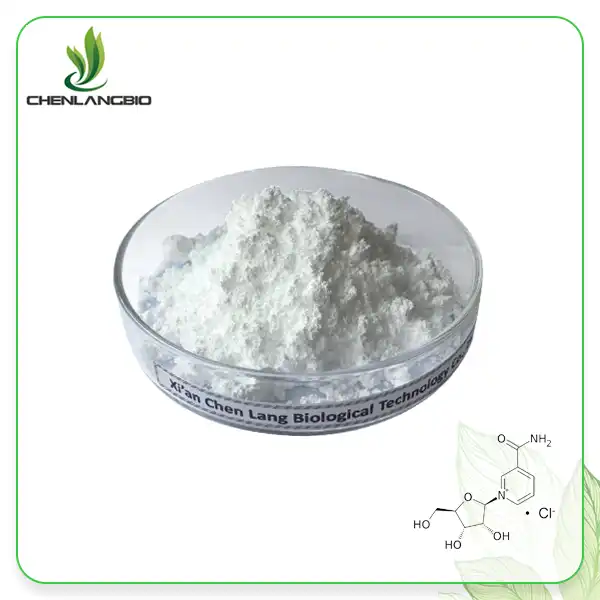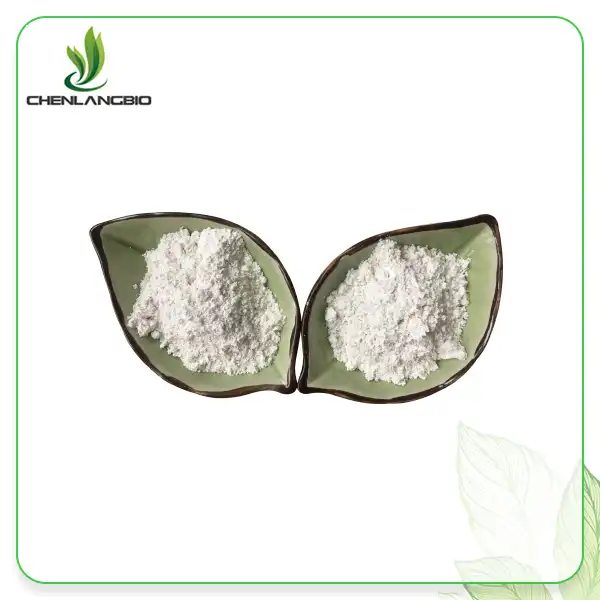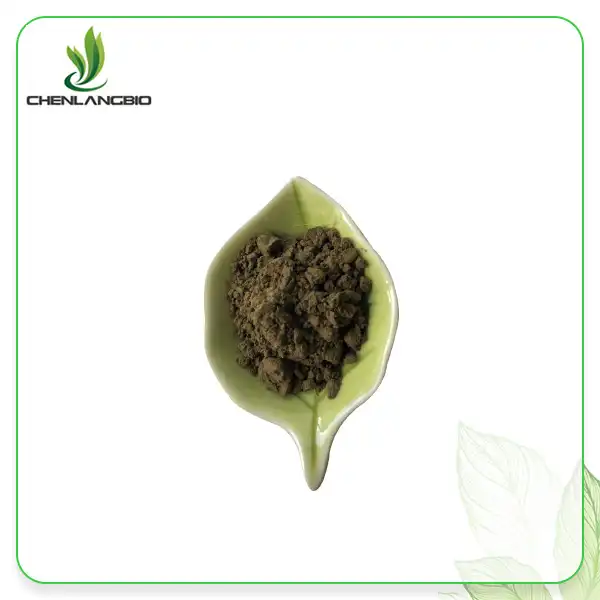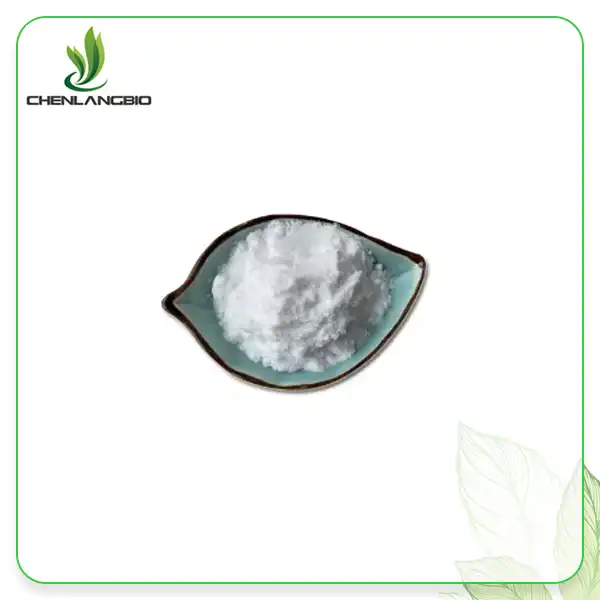Does P5P Help With Sleep?
2025-11-25 13:40:41
Sleep health has become one of the most talked-about wellness topics in recent years, and with that rise in interest comes a growing curiosity about how specific nutrients affect the body’s nighttime rhythms. Among these nutrients, p5p powder—the active form of vitamin B6—stands out because of its unique influence on neurotransmitters involved in relaxation, stress response, and the transition from wakefulness to sleep. While many people take P5P for mood balance, hormone support, or daytime focus, others have begun asking whether this powerful coenzyme can also shape the way they sleep, for better or for worse.
This question matters not only to consumers, but also to supplement brands, OEM/ODM manufacturers, and formulators who want to understand exactly how P5P interacts with serotonin, GABA, melatonin, and other biochemical pathways that regulate nighttime physiology. For some users, p5p powder appears to support calmer evenings and smoother sleep onset. For others, timing or dosage may determine whether P5P feels gently relaxing or slightly activating. These differences are not random—they are rooted in well-defined biochemical mechanisms.
As more brands introduce sleep-support gummies, RTDs, capsules, and functional blends, understanding how P5P really affects sleep is essential. This article takes a clear, research-grounded look at the relationship between p5p powder and sleep quality, helping buyers and product developers determine whether P5P belongs in their nighttime formulas and how to use it with precision.

What Is P5P Powder and Why Its Active Form Matters for Sleep Health
P5P powder, short for pyridoxal-5-phosphate powder, is the metabolically active form of vitamin B6—the exact form the body uses to drive more than a hundred enzyme reactions related to neurotransmitter balance, hormone metabolism, and energy regulation. Unlike standard pyridoxine, which must be converted before it becomes usable, P5P enters key biochemical pathways immediately. This difference is especially important when discussing sleep, because the body’s nighttime biology relies heavily on the availability of active B6.
P5P acts as a required coenzyme in the production of serotonin, GABA, and melatonin—the three pillars of healthy sleep architecture. Without adequate P5P, the conversion of 5-HTP into serotonin is slowed, GABA activity becomes less efficient, and melatonin production may become inconsistent. This is one of the reasons why certain people notice that adding p5p powder to their daily routine influences their ability to unwind or transition into rest, even if P5P isn’t a sedative on its own.
Another reason the active form matters is metabolic variability. Many individuals—especially those under chronic stress, dealing with inflammation, or experiencing hormonal shifts—convert pyridoxine less efficiently. When conversion is slow or incomplete, pyridoxine may deliver inconsistent effects, whereas P5P avoids this bottleneck entirely. For supplement brands developing sleep-support formulas, this is significant: using the active coenzyme ensures that every consumer receives the functional form of vitamin B6, regardless of individual metabolic challenges.
Because P5P participates in both calming and energizing pathways, understanding its active form is crucial. The same biochemical activity that allows p5p powder to support serotonin and GABA can also enhance dopamine and norepinephrine production—neurotransmitters associated with wakefulness and daytime focus. This duality is why some users feel relaxed while others feel more alert when taking P5P at the wrong time or at higher-than-needed doses.
Does P5P Help With Sleep or Not? Understanding Its Dual Effects
The question “does P5P help with sleep” does not have a one-word answer, because P5P influences several neurotransmitter systems that can either calm the body or gently stimulate it. For many people, especially those with low serotonin or GABA activity, P5P provides noticeable sleep-supporting benefits by improving the conversion of 5-HTP into serotonin and strengthening the pathways that make melatonin. In these individuals, adding p5p powder to their daily routine often results in smoother evenings, less restlessness, and a more balanced transition toward sleep.
However, P5P’s role is not limited to calming pathways. It also supports dopamine and norepinephrine synthesis—neurotransmitters associated with focus, alertness, and daytime energy. This dual role explains why reactions to p5p powder and sleep quality can vary. At low doses and with proper timing, P5P leans toward supporting relaxation; at higher doses or when taken too late in the day, some users may feel mentally active or experience vivid dreaming.
These differences do not mean P5P is unpredictable. In fact, they demonstrate exactly how powerfully p5p supplement sleep pathways operate. P5P is not a sedative; instead, it is a metabolic “switchboard” that helps the brain maintain healthy neurotransmitter balance. When this balance leans toward serotonin and GABA, people feel calmer. When it leans toward dopamine and norepinephrine, mental clarity and wakefulness rise.
For brands developing sleep formulations, this duality is crucial to understand. P5P can absolutely support sleep, but it must be used intentionally—with attention to dosage, timing, and ingredient pairing. When positioned correctly within a formula, P5P becomes a valuable cofactor that elevates the effectiveness of other calming ingredients. When used incorrectly, it may shift the body’s chemistry in the opposite direction.
p5p powder sleep benefits do exist, but they depend heavily on how the ingredient is implemented. It is not a “one-size-fits-all” sleep aid; it is a targeted biochemical tool that requires precision to deliver the best nighttime results.
How Much P5P Supports Sleep vs How Much May Disrupt It
When evaluating whether P5P powder helps or interferes with sleep, dosage becomes one of the most important variables. P5P is involved in multiple neurotransmitter pathways, and its effect shifts noticeably depending on how much is taken. Because the line between calming and stimulating pathways is dose-dependent, understanding the p5p dosage for sleep allows brands and buyers to formulate products with predictable results.
Low Doses (5–20 mg): Supportive for Sleep and Relaxation
Lower amounts of P5P typically strengthen the calming neurotransmitter systems—primarily serotonin and GABA. These pathways contribute to emotional unwinding, stress reduction, and a smoother transition into rest. For this reason, most nighttime formulas or relaxation blends include low-dose p5p powder for sleep support within the 5–15 mg range. This gentle level helps other calming ingredients—such as magnesium, 5-HTP, or theanine—work more efficiently without overstimulating dopamine or norepinephrine pathways.
Products positioned as “nighttime calm,” “evening relaxation,” or “sleep-support gummies” generally fall into this low-dose category.
Moderate Doses (20–40 mg): Mood-Stabilizing, but Not Always Ideal Before Bed
Moderate amounts of P5P are often used in daytime formulas targeting mood stability, PMS support, stress resilience, or metabolic health. These doses enhance serotonin, GABA, AND dopamine pathways simultaneously. While this can be beneficial earlier in the day, taking p5p before bed at moderate levels may promote a form of “mental wakefulness” in sensitive individuals.
This is why many users describe mixed reactions:
•Some feel relaxed
•Others feel mentally sharp or dream intensely
•A few may take longer to fall asleep
For evening use, this dose is usually too strong unless part of a balanced multi-ingredient blend clearly designed for nighttime support.
High Doses (40–75 mg): Potential for Alertness and Light Sleep
High-dose P5P is typically found in emotional wellness formulas or specialized therapeutic blends rather than sleep products. At these levels, the ingredient significantly enhances dopamine and norepinephrine activity—neurotransmitters linked to focus, motivation, and cognitive clarity. For certain users, this may unintentionally increase nighttime alertness, making high-dose P5P one of the more common contributors to reports of p5p insomnia.
Although P5P remains safe even at these levels, high doses should not be positioned in any sleep-focused product unless distributed as morning-only dosing.
How Formulators Should Approach P5P Dosage for Sleep Products
For OEM/ODM developers or brands creating global formulations, the safest approach is:
✔ Use 5–10 mg P5P in standard nighttime blends
✔ Use 10–15 mg only when paired with strong calming nutrients
✔ Avoid combining high-dose active B6 and sleep claims in the same product
✔ Place 20–40 mg P5P in daytime mood or stress formulas, not nighttime ones
This approach lowers the risk of overstimulation while preserving the biochemical benefits that make p5p supplement sleep formulations effective.
P5P Powder in Sleep Formulations — How OEMs Use It Correctly
As demand for science-driven sleep and relaxation products grows, many OEM and ODM developers are evaluating how to integrate p5p powder into their nighttime formulas. P5P’s unique ability to influence serotonin, melatonin, and GABA pathways makes it a valuable tool—yet it must be used strategically to avoid unintended stimulation. Understanding how experienced manufacturers use p5p powder for sleep formulas is essential for brands seeking predictable and consumer-friendly outcomes.
Low-Dose Cofactor Strategy (The Most Common Approach)
Leading manufacturers rely on P5P as a biochemical cofactor, not the main sleep ingredient. In this design, the formula uses low-dose P5P (5–10 mg) to support the enzymatic pathways that help ingredients like magnesium, GABA, 5-HTP, or L-theanine perform more effectively. This foundational support improves the overall formula without risking overstimulation. In this way, P5P enhances sleep indirectly—by enabling healthier neurotransmitter balance.
This is the same strategy seen in premium global brands that promote “relaxation,” “calm gummies,” or “nighttime stress support” products featuring active B6 and sleep synergy.
Pairing P5P With Serotonin-Pathway Ingredients
Many OEM developers pair P5P with compounds acting on the serotonin–melatonin pathway. Because P5P is required for converting 5-HTP → serotonin, and serotonin ultimately converts into melatonin, small amounts of P5P ensure the pathway is not limited by cofactor availability. For this reason, it is common to see:
♦P5P (5–10 mg)
♦5-HTP (25–100 mg)
♦Magnesium glycinate (100–200 mg)
These formulas capitalize on the natural synergy between p5p powder and sleep pathways without triggering excessive neurotransmitter activation.
Combining P5P With GABA or Theanine for Balanced Relaxation
GABA-rich and theanine-based relaxation products benefit from P5P’s role in the glutamate-to-GABA conversion pathway. When P5P is included at a proper dose, it indirectly supports the body’s own calming mechanisms. This is why many nighttime beverages and powdered sticks use:
♦P5P + L-theanine
♦P5P + GABA
♦P5P + magnesium bisglycinate
These combinations enhance the “quieting” effect required for sleep, helping the consumer experience deeper rest without the risk of dependence or morning grogginess.
Why OEMs Avoid High-Dose P5P in Night Products
Experienced manufacturers avoid high-dose P5P in nighttime formulas because stronger amounts (30–50 mg) may stimulate dopamine or norepinephrine pathways, leading to:
♦heightened mental alertness,
♦difficulty relaxing, or
♦more intense dreams.
These effects are not dangerous, but they reduce the perceived effectiveness of a sleep product. This is why high-dose P5P is always positioned for daytime stress support or mood balance, not for evening blends.
Best Practices for Brands Developing Sleep Products With P5P
OEM/ODM formulators generally recommend:
✔ Keep p5p dosage for sleep between 5–15 mg
✔ Pair P5P with calming compounds, not energizing B-vitamins
✔ Do not combine with rhodiola, B12, or strong nootropics
✔ Provide clear dosage timing instructions
✔ Use P5P as a cofactor—not the main sedative ingredient
Brands that follow these practices deliver more consistent results and receive fewer customer complaints related to p5p effects at night.
Who Should Avoid Taking P5P Before Bed?
Although many people tolerate p5p powder well and even notice improved emotional balance with daytime use, certain individuals may be more sensitive to its nighttime effects. Understanding who should avoid taking p5p before bed is essential for brands developing sleep-support formulas, as well as for buyers evaluating whether P5P fits into their target consumer group.
1. Individuals Sensitive to Stimulatory Neurotransmitters
Because P5P participates in dopamine and norepinephrine synthesis, some people naturally experience more alertness when these pathways become active. Users with fast neurotransmitter turnover, high stress chemistry, or a naturally “wired” personality may find that nighttime P5P increases mental activity. For these individuals, late dosing may trigger lighter sleep, restlessness, or mild p5p insomnia, especially at moderate to high doses.
2. Users Who Experience Vivid Dreams Easily
One of the most commonly reported nighttime reactions to P5P is intensified dreaming. While this is not harmful, it can make sleep feel mentally busy rather than restorative. Individuals prone to dream sensitivity, especially those with active REM cycles, may want to avoid p5p supplement sleep dosing unless the formula uses a low, carefully structured amount (5–10 mg).
3. People Taking Strong B-Complex Vitamins at Night
Formulas containing multiple B-vitamins, particularly B12 or B3, can increase alertness due to their influence on energy metabolism. When P5P is combined with these nutrients at night, the blend may become too stimulating. This is why professional formulators avoid pairing active B6 and sleep ingredients in evening B-complex supplements.
4. Individuals Taking Stimulants, Pre-Workouts, or High-Caffeine Products
Consumers who use caffeine, pre-workout formulas, or any stimulating herbal products (like rhodiola or ginseng) throughout the day may find that nighttime P5P amplifies alertness instead of calming them. These individuals should generally avoid p5p effects at night, as the compound may interact with their elevated neurotransmitter state.
5. People With High Stress in the Evening
Those who experience intense mental workload, late-night adrenaline surges, or stressful evening routines may push their nervous system into a state where serotonin and GABA are already low. In this case, nighttime P5P might elevate dopamine output before calming pathways catch up, which temporarily increases alertness.
Nighttime P5P is not harmful for these users, but they usually respond much better to morning or early-afternoon p5p powder dosing.
6. Pregnant or Breastfeeding Individuals
Although P5P is generally safe in standard nutritional doses, sleep-related dosing should always be supervised during pregnancy or breastfeeding. Sensitivity to neurotransmitter shifts is higher during these periods, so nighttime use should be guided by professional advice.
7. Individuals Taking Medications Influencing Neurotransmitter Activity
Some medications—such as antidepressants, anticonvulsants, or medications affecting dopamine—may interact with pathways influenced by P5P. While not dangerous, these individuals should avoid unmonitored p5p before bed dosing until they understand how their body responds.
Is P5P Safe for Sleep Support?
Among active B-vitamin ingredients, p5p powder is widely regarded as one of the safest and most predictable options, especially when used within standard nutritional ranges. Because P5P is already in its active coenzyme form, the body does not need to convert it, which reduces the risk of metabolite buildup—a concern more commonly associated with high-dose pyridoxine. This is one of the reasons many manufacturers prefer active B6 for sleep support rather than using large amounts of inactive B6.
Research Shows High Safety and Good Tolerability
Clinical data and long-term nutritional use both indicate that p5p supplement sleep dosing is generally well tolerated, particularly at low levels (5–15 mg). These doses support serotonin and GABA activity without excessively stimulating dopamine pathways. Consumers rarely report negative reactions at these levels, which is why P5P is commonly included in relaxation blends and functional nighttime beverages.
Why Some Users Notice Stimulation Instead of Calmness
Although P5P is safe, its effects are not identical for every user. People who take higher doses close to bedtime sometimes report alertness or vivid dreams. This variability is not due to toxicity or danger; rather, it reflects how p5p powder and sleep pathways interact with individual neurotransmitter chemistry.
In sensitive users, higher nighttime doses may temporarily enhance dopamine or norepinephrine activity, leading to quicker thinking or difficulty falling asleep. These experiences highlight the importance of timing and dose selection rather than any issue with the ingredient itself.
No Known Serious Side Effects at Standard Sleep-Related Doses
Unlike some sedative sleep ingredients, P5P does not:
•suppress natural melatonin production
•cause dependency
•impair REM cycles
•create morning grogginess
•disrupt respiratory patterns
This makes p5p dosage for sleep an attractive choice for brands seeking a gentle, supportive ingredient that complements other well-researched compounds like magnesium, theanine, and 5-HTP.
Important Considerations for Specific User Groups
Certain populations should use P5P under guidance:
♦Individuals on anticonvulsants or dopamine-related medications
♦Pregnant or breastfeeding individuals
♦People with very high nighttime stress levels
♦Users who already take strong B-vitamin complexes in the evening
For these groups, daytime dosing is often more appropriate. Nonetheless, even in these cases, P5P remains safe—the concern is simply whether p5p effects at night align with their specific sleep patterns.
Conclusion: Does P5P Help With Sleep?
After examining the biochemical pathways involved in serotonin, melatonin, dopamine, and GABA, it becomes clear that P5P is not a simple “sleep aid” nor a stimulant. Instead, it is a metabolic regulator—a nutrient that influences both calming and energizing neurotransmitters depending on the dose, timing, and formulation strategy. This is why some users experience smoother evenings and more restful nights with low-dose p5p powder, while others report increased alertness when taking higher amounts too close to bedtime.
For supplement brands and formulation teams, the takeaway is straightforward:
P5P can absolutely support sleep, but only when implemented with precision.
Using it in a cofactor role, pairing it with calming ingredients, and positioning dosing earlier in the day or at low night-time levels ensures that consumers experience the benefits without unintended stimulation.
As demand for advanced, mechanism-driven sleep products continues to grow, understanding how pyridoxal-5-phosphate powder interacts with nighttime physiology will help brands create formulas that perform consistently and align with modern expectations for transparency, efficacy, and scientific grounding.
At XI AN CHEN LANG BIO TECH CO., LTD, we supply high-purity 99% P5P monohydrate powder trusted by global supplement brands and OEM manufacturers.
Why choose us:
♦Factory-direct p5p powder with stable batch quality
♦ISO / Halal / Kosher / GMP certifications
♦Full documentation: COA (HPLC), MSDS, TDS, allergen-free, Non-GMO
♦Flexible MOQ(1–5 kg)
♦Fast global shipping
♦Technical support for capsules、RTDs、gummies、powders
♦Professional guidance for sleep, mood, and women’s health formulations
📩 Email: admin@chenlangbio.com
📱 WhatsApp: +86-17782478823
Tell us your formula goals—we’ll help you source the right P5P and structure your product for global-market success.









